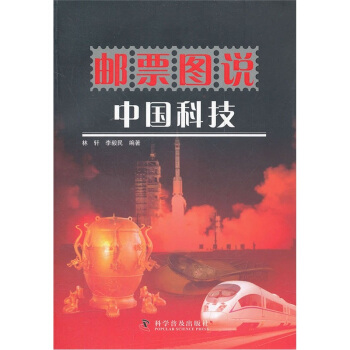![“十二五”国家重点图书:细胞力学进展(英文版) [Advances in Materials and Mechanics]](https://pic.qciss.net/10695784/565524f3N82cd97c7.jpg)

具体描述
内容简介
In this book,we have selected nine research works at the forefront of molecular and cellular biomechanics to be introduced to our readers.It 1S ouropinion that these works represent the current trend and future directions of cellular biomechanics research.By compiling these different topics into one volume.a unique perspective iS provided on the current state of cell mechanics research and what lies in the future.目录
Chapter 1Modeling and Simulations of the Dynamics of Growing Cell Clusters1.1 Introduction
1.2 Single cell geometry and kinematics
1.2.1 The continuum model
1.2.2 The numerical model for the cell geometry
1.3 Single cell equilibrium and material model
1.3.1 Cell equilibrium
1.3.2 The material model
1.3.3 Determination of material constants
1.4 Modeling cell interactions
1.4.1 Cell-to-cell contact
1.4.2 Cell-to-cell adhesion
1.4.3 Cell-to-cell interaction test
1.5 Modeling the cell life cycle
1.6 Details of the numerical implementation
1.6.1 The finite element model
1.6.2 Contact/adhesion interface detection
1.6.3 Time integration
1.6.4 Parallelization
1.7 Numerical results
1.8 Summary and conclusions
References
Chapter 2 Multiscale Biomechanical Modeling of Stem Cell-Extracellular Matrix Interactions
2.1 Introduction
2.2 Cell and ECM modeling
2.2.1 Basic hypothesis and assumptions
2.2.2 Hyperelastic model
2.2.3 Liquid crystal model
2.3 Contact and adhesion models for cell-substrate interactions
2.3.1 The adhesive body force with continuum mechanics contact
2.3.2 The cohesive contact model
2.4 Meshfree Galerkin formulation and the computational algorithm
2.5 Numerical simulations
2.5.1 Validation of the material rhodels
2.5.2 Cell response in four different stiffness substrates
2.5.3 Cell response to a stiffness-varying substrate
2.5.4 Comparison of two different contact algorithms
2.5.5 Three-dimensional simulation of cell spreading
2.6 Discussion and conclusions
References
Chapter 3 Modeling of Proteins and Their Interactions with Solvent
3.1 Introduction
3.2 Classical molecular dynamics
3.2.1 Coarse-grained model
3.2.2 High performance computing
3.3 Principal component analysis
3.3.1 Three oscillators system analysis with PCA
3.3.2 Quasi-harmonic analysis
3.3.3 Equilibrium conformational analysis
3.4 Methods and procedures
3.4.1 Framework
3.4.2 Overlap coefficients
3.4.3 Correlation analysis
3.4.4 PCA with MD simulation
3.4.5 Kabsch algorithm
3.4.6 Positional correlation matrix
3.4.7 Cluster analysis
3.5 MDsimulation with T4 lysozyme
3.5.1 Equilibration measures
3.5.2 Fluctuation analysis
3.5.3 Mode selection and evaluation
3.5.4 Eigenvalue analysis
3.5.5 Overlap evaluation
3.5.6 Identification of slow conformational flexibility
3.5.7 Correlation analysis of T4 lysozyme
3.6 Hemoglobin and sickle cell anemia
……
Chapter 4 Structural, Mechanical and Functional Properties of Intermediate Chapter 5 Cytoskeletal Mechanics and Rheology
Chapter 6 On the Application of Multiphasic Theories to the Problem of Chapter 7 Effect of Substrate Rigidity on the Growth of Nascent Adhesion Chapter 8 Opto-Hydrodynamic Trapping for Multiaxial Single-Cell Biomechanics
Chapter 9 Application of Nonlocal Shell Models to Microtubule Buckling in Living Cells
Appendix A
Appendix B
Appendix C
Appendix D
References
精彩书摘
The life cycle of each cell can be summarized as follows:Each cell is created a8 an ellipsoidal solid with random orientation and volume fwithina pre-determined interval).A finite element mesh iS created as described in Section 1.2.Each of the cells holds an internal“clock”that measures the elapsed time since its creation.For a pre-determined period of time.the cell grows isotropically as described in Section 1.3 reaching at the end an“adult” volume which will remain unchanged(except for the possible deformationl until the eventual death or duplication of the cell.
0nce a cell is considered to be adult it might divide itself.A random ari-
able is sampled at birth determining a dividing pressure(in our simulations
we have employed an exponential distribution).Approximately every hour (the precise interval is randomly selected for each cell),the average pressure in the cell iS compared with the dividing pressure.If the former iS smaller.the cell divides,and otherwise it remains quiescent.Due to this algorithm.cells in the cluster surface are more prone to divide those in the core.When a cell divides.two small cells are generated close to the center of the parent cell with random orientation.For geometrical reasons,each of these child cells must have a rather small volume SO that,in their creation,they do not overlap with neighboring cells but rather fit within the volume previously occupied by the parent cell.In a short period,each of the two children grows untilits volume becomes close to half of the volume of its parent cell.with the iireFences related to the randomness in the cell original dimensions.These ariations are small and,more importantly,have no effect on average upon he balance of ass.We note that this algorithmic growth is unrelated with the cell true iological growth which iS described in Section 1.2.At birth,every cell also amples a random life duration.which in our simulations followed a Weibull distribution.If a cell becomes too old.it simplv dies and isappears.This often happens to cells in the core,whose average pressure is high and rarely divides.whereas in the cells closer to the surface such phenomenon iS more unlikely.because the cells’clocks reset every time they divide.The last two phenomena have been observed in experiments.as
explained in Introduction,and are ultimately responsible for the saturated
growth laws shown in Section 1.7.
……
用户评价
这本书的封面设计就散发出一种沉静而又充满学术气息的韵味,那抽象的细胞图案和“十二五”国家重点图书的标识,无形中给我一种信息:这是一本内容扎实、值得深入研究的书籍。我一直对生物学中的物理学应用非常感兴趣,而“细胞力学”这个概念,更是直接触及到生命最微观的运作层面,让我充满了好奇。我猜测,这本书的篇幅可能会很大,内容会非常详实,会系统地介绍当前细胞力学领域的研究进展,可能涵盖细胞如何感知力、如何响应力、以及这些力学信号如何在细胞内部传递和转化的过程。我尤其希望能了解到,最新的研究成果是如何将细胞力学的原理应用于解决实际的生物医学问题,比如疾病的诊断、药物的开发,或者组织工程的构建等等。如果书中能够提供清晰的图解和案例分析,那对我这样希望理解前沿科学的读者来说,会是一次极大的帮助。
评分当我看到这本书的书名时,立刻联想到我之前读过的一些关于生物物理学的入门书籍,它们虽然精彩,但往往侧重于宏观的物理原理在生物体上的应用。而《细胞力学进展》似乎更进一步,将焦点聚焦在最微观的尺度——细胞本身。这让我产生了一种莫名的期待:这本书是否会深入探讨细胞在承受各种机械应力时的响应机制?例如,细胞膜的弹性、细胞核的刚度,以及它们是如何影响细胞功能和活性的。我猜想,这本书可能会介绍一些先进的成像技术,比如原子力显微镜(AFM)或者微流控技术,是如何被用来测量细胞的机械性能的。同时,我也好奇书中是否会提及一些与疾病相关的细胞力学研究,比如癌细胞的迁移能力、心肌细胞的力学特性变化等。如果这本书能够清晰地阐述这些微观的物理过程如何驱动宏观的生物现象,那对我来说将是一次非常宝贵的学习经历。
评分这本书的封面设计就带着一种沉静而又充满力量的美感,深蓝色为主调,点缀着抽象的细胞结构图案,仿佛是微观世界的艺术写照。我之所以会被它吸引,很大程度上是因为“十二五”国家重点图书这一标签,它暗示了这本书背后承载的学术深度和国家层面的认可,总让人觉得里面蕴含着重量级的信息。虽然我目前还没有深入翻阅,但仅仅是看到这个标题——《细胞力学进展》,就激起了我强烈的求知欲。细胞力学,这个概念本身就充满了科学的神秘感,它涉及到我们生命最基本单元的物理特性,想象一下,这些微小的细胞在承受压力、形变时会发生什么?它们是如何在这些物理力作用下维持生命活动、传递信号、甚至参与到疾病的发生发展中的?我期待这本书能够像一位经验丰富的向导,带我穿越细胞膜的边界,探索细胞内部那些令人着迷的物理规律,了解最新的研究成果如何揭示生命活动的新视角。这本书的英文版也意味着它能够与国际前沿研究接轨,这对于我这样希望拓展学术视野的读者来说,无疑是极大的福音。
评分我最近在寻找一些能够启发我思考生命现象背后机制的读物,偶然间看到了这本《细胞力学进展》。“进展”二字就足以说明它不是一本陈旧的教科书,而是汇集了当前领域内的最新动态和突破。我非常好奇,在过去的一段时间里,科学家们在细胞力学这个领域究竟取得了哪些突破性的进展?是不是有一些全新的实验技术和理论模型被开发出来,从而让我们能够以前所未有的精度来观测和理解细胞的物理行为?比如,细胞是如何在力的作用下进行迁移和变形的?细胞骨架在其中扮演了怎样的角色?这些问题不仅是基础科学的探索,也可能与疾病的诊断和治疗息息相关。我设想,这本书会包含大量的图表和数据,清晰地展示复杂的实验结果和理论推导,让读者能够直观地感受到科学研究的严谨和精妙。即使我不是这个领域的专家,我也相信通过这本书的引导,能够逐渐理解细胞力学在生物学、医学甚至工程学等多个领域的重要意义。
评分这本书给我留下的第一印象,是它所蕴含的那种严谨的学术气质。“十二五”国家重点图书的标识,本身就传递出一种权威性和深度,让我对其内容充满了期待。尽管我目前还没有机会翻阅,但单凭书名《细胞力学进展》就足以激起我的好奇心。我一直对生命体最基础的构成单位——细胞,在物理层面的表现充满兴趣。想象一下,这些微小的生命单元是如何承受、传递、甚至响应外部的机械力?它们在运动、分裂、分化过程中,其力学特性又会发生怎样的变化?我期待这本书能够深入探讨这些问题,或许会介绍一些前沿的实验技术,例如利用微纳技术来精确操控和测量细胞的力学性质,或者介绍一些复杂的数学模型来描述细胞的力学行为。这本书的英文版本,也意味着它能够与全球的学术界同步,了解国际上在这一领域最前沿的研究动态,这对于我拓展知识视野非常有价值。
相关图书
本站所有内容均为互联网搜索引擎提供的公开搜索信息,本站不存储任何数据与内容,任何内容与数据均与本站无关,如有需要请联系相关搜索引擎包括但不限于百度,google,bing,sogou 等
© 2026 book.qciss.net All Rights Reserved. 图书大百科 版权所有










![中国近现代科学技术史丛书:中国数学的西化历程 [THE WESTERNIZATION OF MATHEMATICS IN CHINA] pdf epub mobi 电子书 下载](https://pic.qciss.net/10886564/a48539da-4321-4caf-aea3-a576282ddb86.jpg)
![普通高等教育“十一五”国家级规划教材:分子遗传学 [Molecular Genetics] pdf epub mobi 电子书 下载](https://pic.qciss.net/10917149/cbacfec5-47ad-40e0-8480-55e56fc87003.jpg)

![美国地理环境概述(高等学校泛读与泛听双功能新型教材) [Geography of the USA] pdf epub mobi 电子书 下载](https://pic.qciss.net/10961426/9801d4e9-3863-4829-ba41-56eec26758ad.jpg)


![非线性物理科学:连续动力系统(英文版) [Continuous Dynamical Systems] pdf epub mobi 电子书 下载](https://pic.qciss.net/11018352/567105aaN8a3a41b8.jpg)



